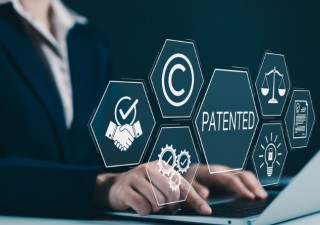China’s Ministry of Commerce published the Report on the Latest Development in IPR Protection and Business Environment in China in September 2017, summarizing the goals and major milestones in the development of IP in China from 2013 to 2016. Asia IP reports on key findings and ambitions going forward.
Improving the Legal System
Increasing the effectiveness of the legal system means for one to raise the cost of IP infringement. Amendments to China’s Trademark Law raised the ceiling of statutory compensation from Rmb500,000 to Rmb3 million (US$75,500 to US$453,000), while amendments to four administrative regulations brought fines from fixed amounts to a percentage of the value of infringing products or services. Similar changes are underway for the Patent Law, the Copyright Law, and the Law against Unfair Competition.
On the other hand, IP protection has been strengthened by additions to various legislation like the Seed Law and Guideline for Patent Examination, and by the drafting of new laws like the Electronic Commerce Law. To hold the IP enforcement more accountable and transparent, administrative punishment cases involving counterfeit and substandard commodities are now required to make punishment information known to the public within 20 working days.
Improving Administrative Law Enforcement
More than 170 special operations have been carried out by law enforcement departments since 2013, targeting key areas like internet infringement, counterfeiting in rural markets, and counterfeiting in imports and exports. Standardizing copyright orders in books, film and television, literature, music, and software and games was another focus area: between 2013 and 2016, 18,000 cases of infringement and piracy were investigated, of which 1,200 cases were brought to court and over 58 million infringing publications seized.
Stepping Up the Judicial Protection System
Local people’s courts handled close to 40,000 IP-related criminal cases between 2013 and 2016, and concluded 440,000 civil and administrative litigation cases of IPR infringement with an average annual growth of 15 percent. This is in part enabled by a trial system reform where specialized IP courts were set up in Beijing, Guangzhou and Shanghai; 6 IP tribunals were also set up in major cities with 4 more in Hangzhou, Jinan, Qingdao and Fuzhou underway.
Enhancing Regional Coordination
The National Leading Group on the Fight against IPR Infringement and Counterfeiting was set up with the State Council Vice Premier leading 29 government agencies in a bid to unify IP leadership. Not only has the group been pushing for convergence of administrative law enforcement and criminal justice, it has also facilitated several regional cooperation plans. This includes the Yangtze River Delta and Pan-Pearl River Delta network, the Beijing-Tianjin-Hebei regional network, and the Silk Road Economic Belt network of 10 provinces that play a key role in land transit trade.
Public-private cooperation is another item on the IP agenda: over 200 companies have been engaged in the National E-commerce Product Anticounterfeiting Rights Cooperation Network in Hangzhou, and the government encouraged formation of industry alliances by working with Alibaba, Baidu, Lenovo and JD Group through the China Industry-University- Research Institute Collaboration Association.
Deepening International Cooperation
Many bilateral cooperation agreements have been initiated or reached over the past few years, including the 2011 United States-China Intellectual Property Rights Cooperation Framework Agreement, the China- EU Agreement on Cooperation and Protection of Geographical Indications, the China-Japan-Korea Free Trade Agreement, and the Regional Comprehensive Economic Partnership.
2017 also saw China’s Ministry of Commerce hosting the meeting of the BRICS IPR Cooperation Mechanism, which resulted in the passing of the BRICS IPR Cooperation Guidelines. Ongoing efforts to host high-level conferences with countries along the Belt and Road continue as China participates actively in the Council for Trade-Related Aspects of Intellectual Property Rights and the APEC Intellectual Property Rights Experts Group.
Optimizing the Broader Business Environment
Recognizing that IP is a vital, but by no means the only, factor in the greater business ecosystem, the government has been working to implement other investment facilitate policies. The Law on Wholly Foreign-Owned Enterprises was amended to significantly reduce record-filing procedures and processing time, and the September 2017 IPR Protection Action among Foreign-invested Enterprises unites 12 government departments to help companies tackle infringement challenges.
What More Can Be Done?
 While the report gives a nice tally of significant IP developments, many specific areas have yet to be addressed. Spring Chang, founding partner of Chang Tsi & Partners in Beijing, points out that despite stronger law enforcement support, detecting infringement and collecting infringing evidence remains challenging.
While the report gives a nice tally of significant IP developments, many specific areas have yet to be addressed. Spring Chang, founding partner of Chang Tsi & Partners in Beijing, points out that despite stronger law enforcement support, detecting infringement and collecting infringing evidence remains challenging.
“Most infringers of patents owned by the multinational patentee are small shop owners. It is difficult and dangerous for the investigation team of the patentee to enter and to collect evidence. Local protectionism also remains strong. The local political view can influence the court decision, and the dispersed nature of online purchasing can mean the plaintiff has difficulty finding a right avenue to bring the case to other provinces or jurisdictions,” she says. These issues point to the need for stronger support from law enforcement beyond major cities and provincial capitals to second- and third-tier cities and rural areas.
 Lanny Li, a partner at HFG Law and Intellectual Property in Beijing, comes down on the front of e-commerce. “E-commerce platforms like Taobao and social media like WeChat are the main platforms for the transactions of infringing goods. For some brand owners, more than 20,000 infringing listings were taken down from e-commerce platforms per month,” Li points out. She suggests the establishment an IP credit reference system to better trace infringing activities nationally, as well as for e-commerce platforms to step up legal protection for brands by more actively enforcing not only IP but also other legal fields like advertisement and tort law.
Lanny Li, a partner at HFG Law and Intellectual Property in Beijing, comes down on the front of e-commerce. “E-commerce platforms like Taobao and social media like WeChat are the main platforms for the transactions of infringing goods. For some brand owners, more than 20,000 infringing listings were taken down from e-commerce platforms per month,” Li points out. She suggests the establishment an IP credit reference system to better trace infringing activities nationally, as well as for e-commerce platforms to step up legal protection for brands by more actively enforcing not only IP but also other legal fields like advertisement and tort law.
Xia Zhang, founder and president of AFD China Intellectual Property in Beijing, echoes the need for more wellrounded legal support as companies start to value pre-filing strategies and the utilization of the IP portfolio.
“For those having high-value (IP rights) and who seek overseas protections, alternative protection scopes will be contained in the initial draft of the application documents in order to have a basis for future amendments to make the application in conformity with patent laws of different countries. The standard for a successful case is no longer that a patent can be granted but that it is effective and enforceable. More and more methods and tools are being used in IP planning and protection, such as market monitoring and investigation, evasion of infringement, mapping and early warning, administrative and legal solutions, etc.”
While IP utilization can take many forms, patent and copyright licensing may be a key growth area for application. “Trademark licensing is traditionally more common in mainland China than patent and copyright licensing. Now China has quite a large number of registered patents, but the quality of applications is not high and the patent rights are usually not stable,” says Li.
“Meanwhile, licensing of the patent right tends to be limited to specific fields such electronics and communications, and have yet to spread to other industries. On the other hand, recent years have seen China apply for the copyrights in large quantities, yet copyright licensing is still undeveloped, pointing to much room for growth and improvement (in these areas).”
Zhang relates a metaphor from Changyu Shen, commissioner of the State Intellectual Property Office: IP functions like a vehicle. Where the protection and management are the driven wheels, the creation and use of IP are the trailer wheels. Going forward, the state must facilitate both the effective protection and utilization of IP to stimulate invention, protect creation, promote innovation and drive development.



 Lanny Li, a partner at HFG Law and Intellectual Property in Beijing, comes down on the front of e-commerce. “E-commerce platforms like Taobao and social media like WeChat are the main platforms for the transactions of infringing goods. For some brand owners, more than 20,000 infringing listings were taken down from e-commerce platforms per month,” Li points out. She suggests the establishment an IP credit reference system to better trace infringing activities nationally, as well as for e-commerce platforms to step up legal protection for brands by more actively enforcing not only IP but also other legal fields like advertisement and tort law.
Lanny Li, a partner at HFG Law and Intellectual Property in Beijing, comes down on the front of e-commerce. “E-commerce platforms like Taobao and social media like WeChat are the main platforms for the transactions of infringing goods. For some brand owners, more than 20,000 infringing listings were taken down from e-commerce platforms per month,” Li points out. She suggests the establishment an IP credit reference system to better trace infringing activities nationally, as well as for e-commerce platforms to step up legal protection for brands by more actively enforcing not only IP but also other legal fields like advertisement and tort law. 



